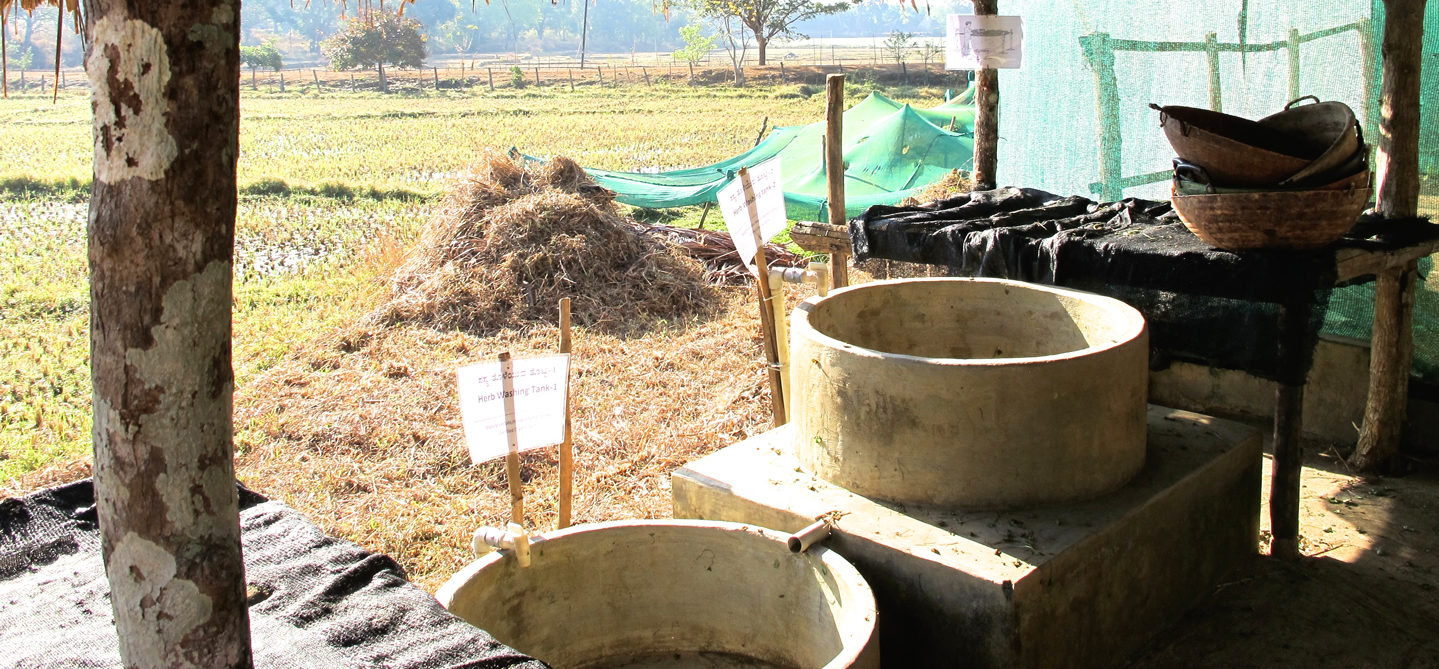
The Supply Chain
The Supply Chain – A Deeper Look
Though the general steps of sourcing herbs are fairly straightforward, making a consistently high quality and safe consumer product using sustainably produced ingredients is extremely complex. Different plants require different processes as do the different parts of plants. Aerial parts are handled differently than roots or barks; flowers need more care and attention than leaves. Each company has different standards which guide decisions about where to source raw materials and how and where to process and test each step.
Amidst this variation, there are several key steps most good companies follow in developing products and finding the raw materials needed to produce them (thanks to Josef Brinckmann for providing the content for this overview):
Step 1: Formula
A company decides on a formula. Based on standards from the particular tradition that the formula is based on, e.g. Traditional European/Western Herbalism, Ayurveda, Traditional Chinese Medicine, etc., the company develops specifications for the specific qualities needed for each of the raw materials. This information includes which plant part is needed to have the desired effect (leaf, flower, stem, bark), the time of harvest, and how the plant material should be handled and processed to produce the effects claimed by the formula.
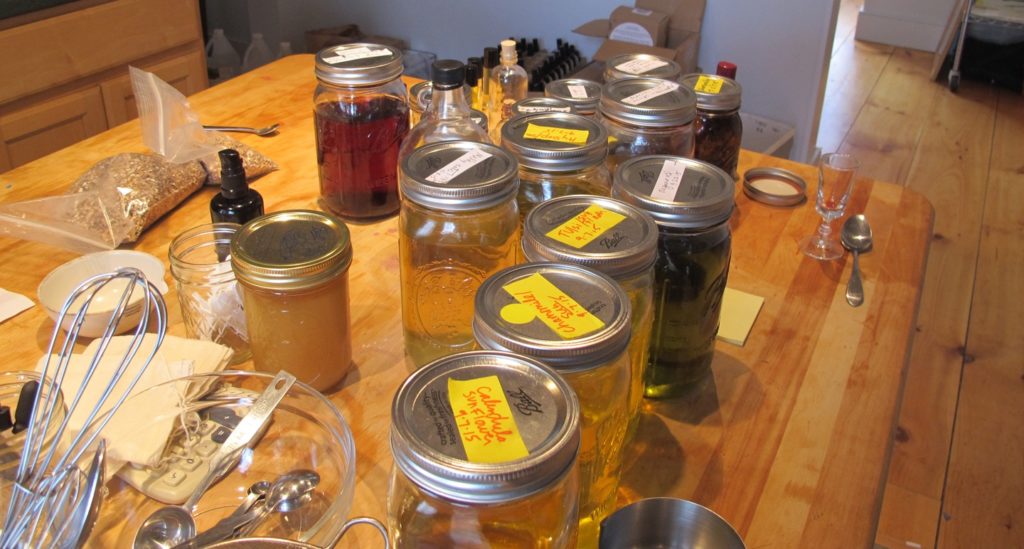
Creating products at a small farm in Vermont.
Step 2: Samples
The company next solicits samples of raw materials from prospective producer groups. Producer groups are typically a primary processor that in turn sources from farmers and/or collectors. They are looking to determine whether these groups are capable of consistently producing the quality needed to have the intended effect. Some examples include:
- Producer A: wild collecting the plant in its place of origin. If they are harvesting and post-harvest processing the plant in the traditional ways, the raw material should be comparable to what has been observed and described in the traditional literature as being effective.
- OR Producer B: cultivating the species in a different continent, different soil, different altitude, different weather, different ecosystem. This raw material could also comply with the traditional standard, but the company will need to test this other plant grown under different conditions because the chemical composition might be significantly different from plants grown in their place of origin.
Step 3: Source
Select the site for sourcing – this depends in part on the values of the company. Some prioritize sourcing from the plants’ geographical place of origin. Others prioritize domestic cultivation. Regardless of where the plant is grown, the company must ensure it has the chemical composition needed to produce the effects claimed on the label.
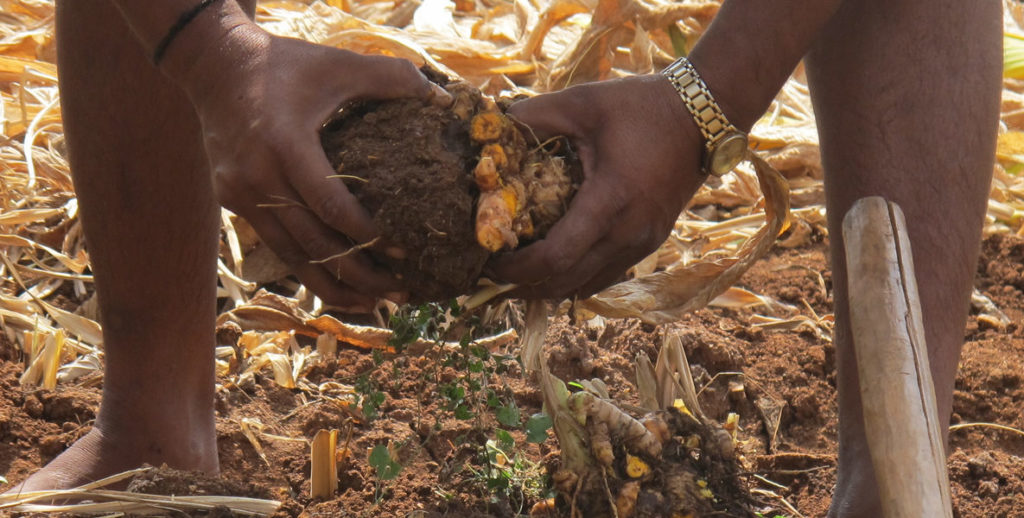
Turmeric grown on a small organic farm in the western Ghats, Karnataka, India
Step 4: Site Visit
Company staff make site visits to assess the capacity of the producer group they want to work with. Again, different choices impact this decision depending on the size and values of the company. Companies might work directly with farmer groups or collector groups. But most herb companies work with producer groups or processing companies who in turn work directly with farmers or collectors. The processing company oversees most of the on the ground work (combining lots for processing, testing, storage and shipping) and is the primary contact for finished product companies on these site visits. See Relationships through the Supply Chain for more on the importance of this relationship.
- For smaller herb companies that intend to stay small, it is important to find a small producer who is capable of producing the amounts they need. Matching scale (size of producer and/or processing group and finished product company) is key to successful relationships in this industry.*
- A larger herb company that is planning to grow will likely need to look for more than one producer. As companies get bigger, they need to have strategies for spreading the risk to allow for disruptions caused by political upheaval, weather challenges, etc. Most companies I spoke with have a strategy of having at least two different sources of most of the raw materials they require.
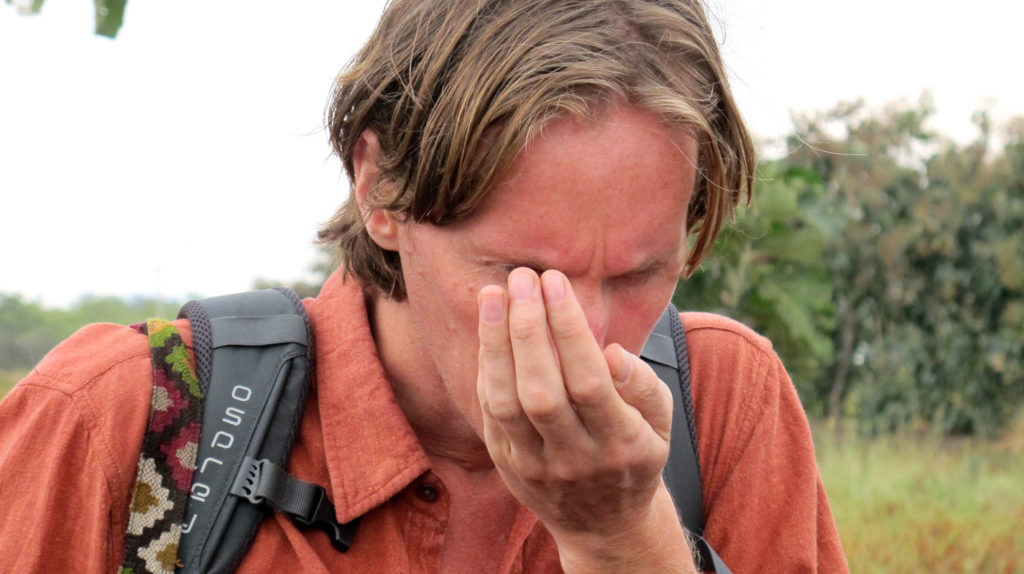
Ben Heron of Pukka Herbs on a site visit to southern India
Step 5: Qualify the Vendor
When qualifying a vendor, the herb company should consider the following:
- Can the producer groups consistently meet the company’s quality standards?
- Are they a viable business?
- How long have they been around?
- What is their track record for getting goods to market?
- Can they implement standards?
- What will it take to get them certified and to meet the standards needed for certification?
- Can they do this with or without technical support from you?
- What are the cost implications of certifications and who will bear them?
Note: The inspections for each certification (organic, Fair Trade, etc.) can cost 5000-7000 Euros/year if the operation is situated in a remote location (when including the travel and accommodation costs of the inspector), making certification unattainable for small producers. In this case, a buyer might look for ways the producers can scale up (increasing production over time) or scale out (adding operations in neighboring villages) to help spread the cost of certification.
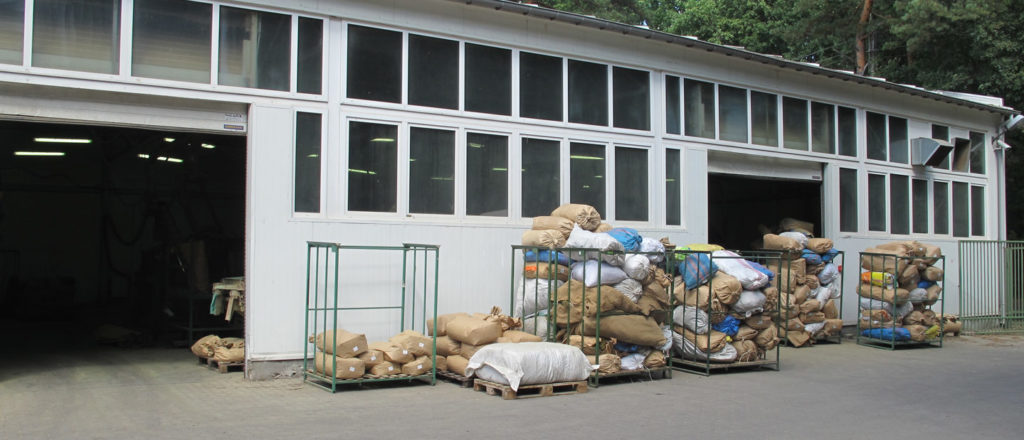
Herbs waiting to be processed at a primary processing company in Eastern Europe
A Note on Scale
Companies face ongoing challenges for finding sources of herbs in large enough quantities, high enough quality (cleanliness, proper handling and processing procedures etc.), and at the right price point. It takes a long time for a company to develop relationships with suppliers and to ensure that those suppliers can meet the company’s standards. Matching scale is crucial for successful relationships through the supply chain. Some of issues:
- Lot Size: Each lot has to be tested and monitored, requires its own set of paper work. Larger lots are more efficient and thus more cost effective, yet there are tradeoffs. Plants from larger lots are typically grown as mono-crops which can affect the chemical composition. Growing medicinal plants as mono-crops can also be antithetical to the values of herbal medicine that emphasize the importance of diversity for both the efficacy of the medicine and the value for the environment. The companies I visited try to find a balance. They source from larger farms to ensure the quality and consistency and smaller farms/projects to support the company’s broader social and environmental mission.
- Voice: Most companies go through an intermediary to handle transportation, processing, testing, storage and the many problems that arise in sourcing from around the world. While direct access to producer groups is key to longterm relationships, it takes time for a company to get to a place where they can insist on transparency and direct access to the producers. The intermediary needs to trust that the company won’t go around them and buy directly from the producer. It also takes size. And so the more a company buys, the more influence they have in how things are done. It’s an interesting juggle – these systems of traditional medicine that value small-scale, personal relationships but increasingly depend on raw materials in an industry where the pressure is to scale up.
